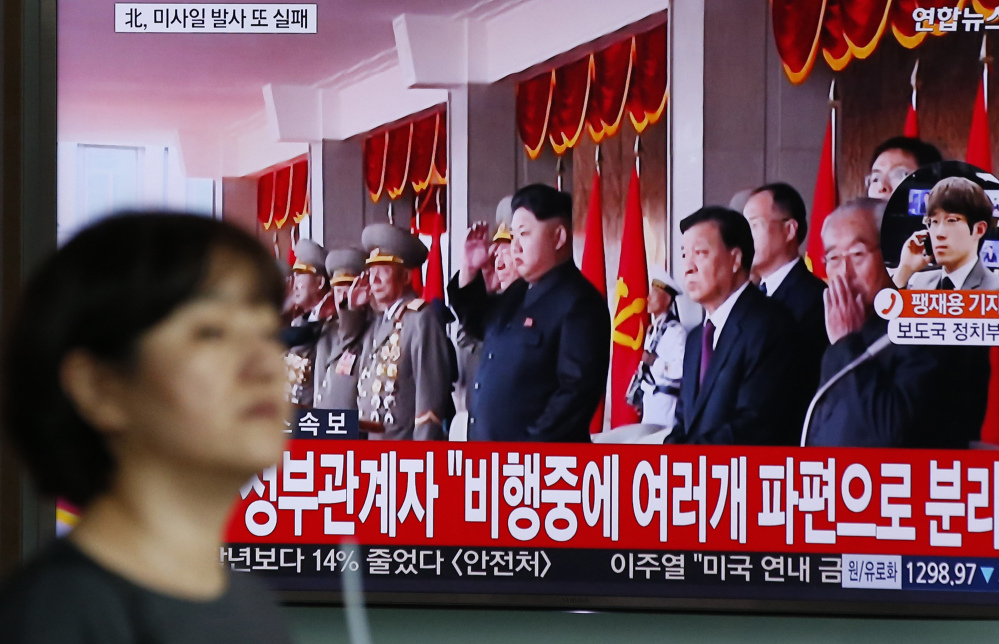SEOUL, South Korea — North Korea took a significant step Wednesday in the development of a powerful ballistic missile intended to reach U.S. bases in the Pacific, launching one of the weapons about 620 miles high after five failed attempts in recent months.
The North’s suspected Musudan tests worry Washington and its allies, Tokyo and Seoul, because the missile’s potential 2,180-mile range puts much of Asia and the Pacific, including U.S. military bases there, within reach.
Japanese Defense Minister Gen Nakatani said the most recent launch demonstrated a “certain level of capability,” and could lead to a further strengthening of North Korea’s ballistic missile capabilities that can cover Japanese territory.
Each new test – apparently linked to a command from North Korean leader Kim Jong Un – likely provides valuable insights to the North’s scientists and military officials as they push toward their goal of a nuclear and missile program that can threaten the U.S. mainland. Pyongyang earlier this year conducted a nuclear test, its fourth, and launched a long-range rocket that outsiders say was a cover for a test of banned missile technology.
A statement from South Korea’s Joint Chiefs of Staff said a suspected first Musudan launch from the east coast city of Wonsan failed. It didn’t elaborate, but Japan’s Defense Ministry said the missile fragmented and pieces fell into waters off the Korean Peninsula’s east coast.
Later on Wednesday, the South’s military said the North fired another suspected Musudan, which flew about 245 miles. Seoul didn’t immediately classify this launch as either a success or failure.
Japan’s Defense Ministry said that its radar analysis found that the missile reached an altitude exceeding 620 miles, which suggests it was a Musudan missile.
“We have to see it as a success,” Lee Choon Geun, an analyst at South Korea’s state-funded Science and Technology Policy Institute, said of the second launch. “No other (previous) missiles fired by North Korea have ever flown that high.”
The U.S. Strategic Command in Hawaii said its systems detected and tracked two suspected North Korean Musudan missiles that fell into the Sea of Japan. They didn’t pose a threat to North America, it said.
In April, North Korea attempted unsuccessfully to launch three suspected Musudan missiles, but all exploded midair or crashed, according to South Korean defense officials. Earlier this month, North Korea had another suspected Musudan failure, South Korean officials said.
Copy the Story LinkSend questions/comments to the editors.



Success. Please wait for the page to reload. If the page does not reload within 5 seconds, please refresh the page.
Enter your email and password to access comments.
Hi, to comment on stories you must . This profile is in addition to your subscription and website login.
Already have a commenting profile? .
Invalid username/password.
Please check your email to confirm and complete your registration.
Only subscribers are eligible to post comments. Please subscribe or login first for digital access. Here’s why.
Use the form below to reset your password. When you've submitted your account email, we will send an email with a reset code.